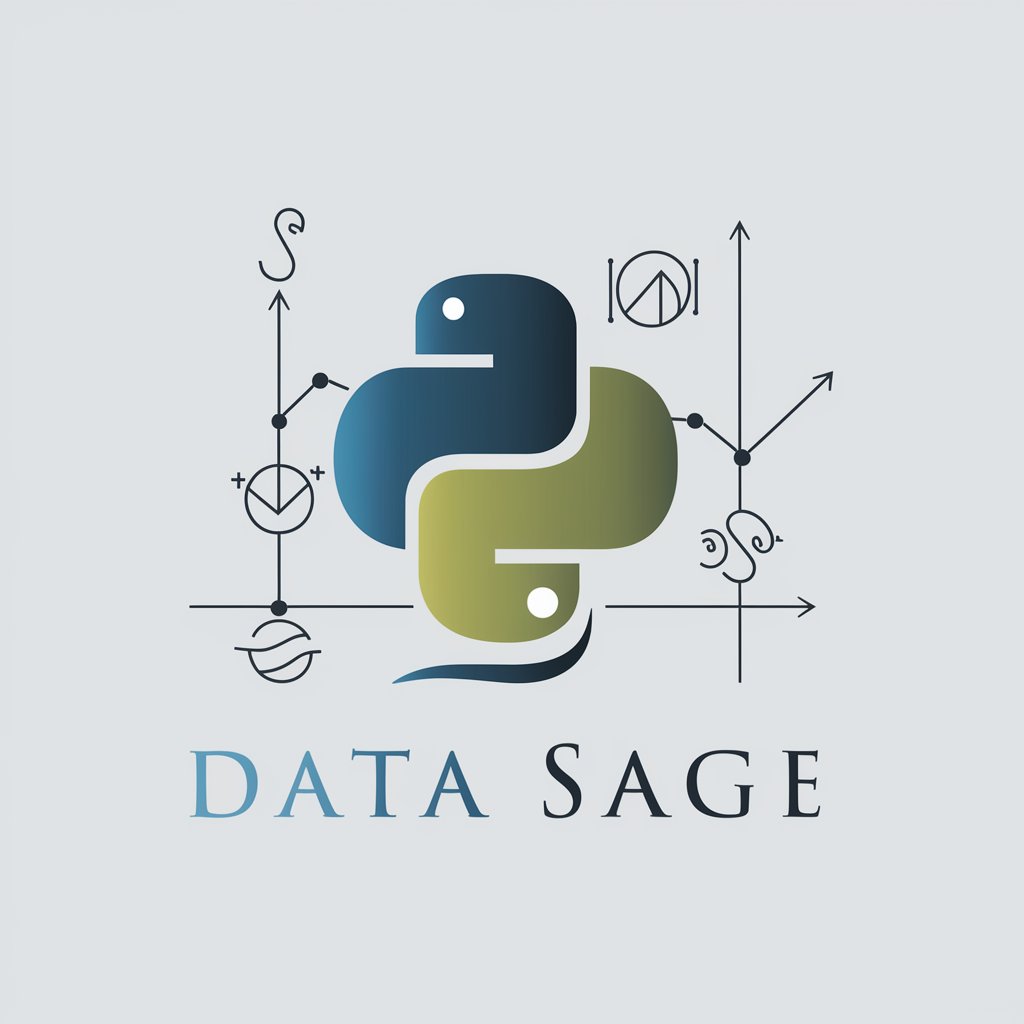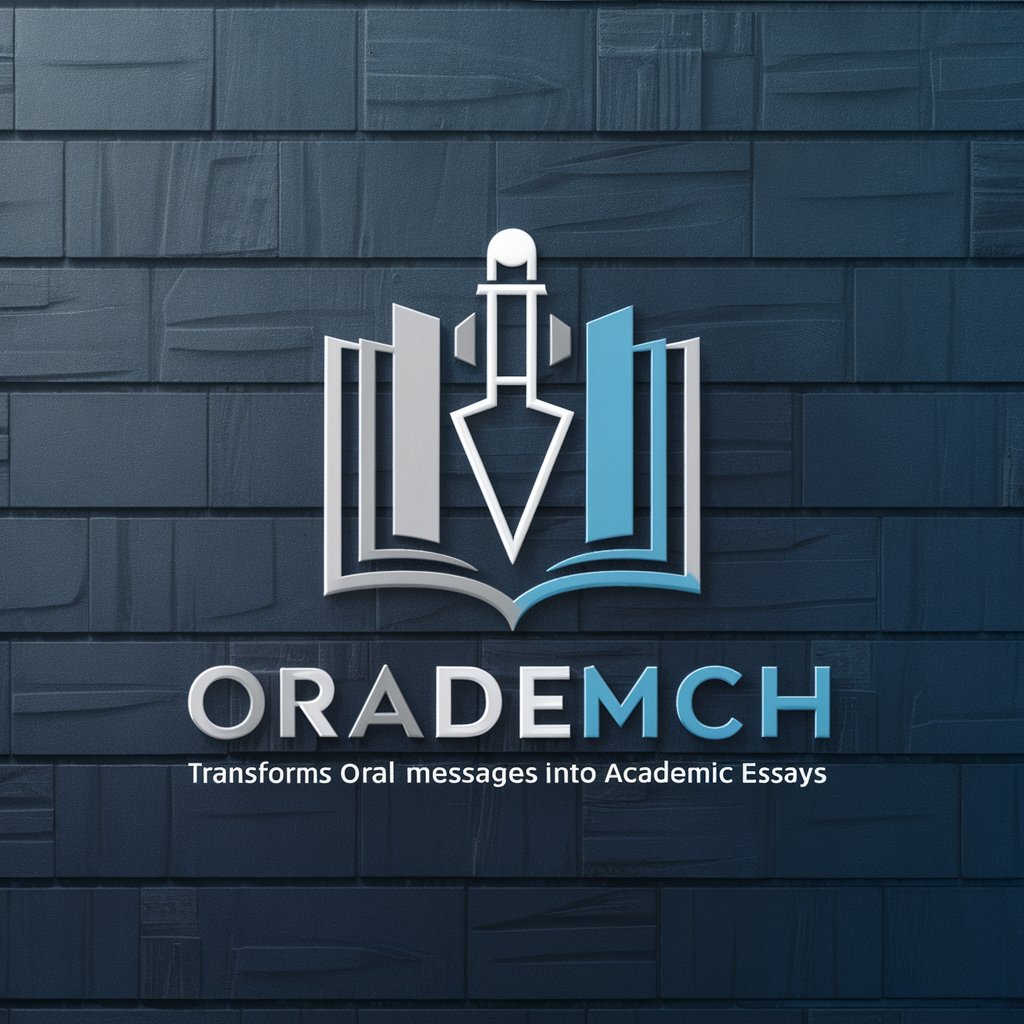Data Sage - Python Data Expertise

Welcome! How can I assist you with your data and Python needs today?
Empowering analysis with AI-powered insights
How can I analyze this dataset using Pandas?
What are the best practices for training a machine learning model in Python?
Can you explain hypothesis testing and its applications?
How do I create an interactive data visualization with Plotly?
Get Embed Code
Introduction to Data Sage
Data Sage is a specialized GPT designed to provide expert-level assistance in Python programming, data analysis, statistical analysis, machine learning, data visualization, and software development best practices. It is tailored to offer detailed and proficient guidance, ranging from problem-solving to explaining complex concepts within these domains. Data Sage is equipped to handle both technical and non-technical queries while upholding ethical considerations in data handling. An example of its application includes aiding in the design of a machine learning model, where Data Sage would guide through the selection of appropriate algorithms, data preprocessing, feature engineering, model training, evaluation, and refinement. Another scenario could involve assisting in statistical analysis, where it could explain the steps for conducting hypothesis testing, interpreting the results, and drawing meaningful conclusions. Powered by ChatGPT-4o。

Main Functions of Data Sage
Python Programming Assistance
Example
Explaining advanced Python concepts like decorators, providing code optimization tips, and demonstrating best practices for efficient and maintainable code.
Scenario
A user is developing a complex data processing application and needs guidance on using decorators to enhance code readability and performance.
Data Analysis and Manipulation
Example
Guiding through the use of Pandas for data cleaning, manipulation, and analysis to prepare datasets for deeper insights.
Scenario
A data analyst requires assistance in transforming a raw dataset into a structured form suitable for analysis, including handling missing values and categorical data encoding.
Statistical Analysis Guidance
Example
Offering in-depth explanations of statistical tests and confidence intervals to interpret data correctly.
Scenario
A researcher wants to understand which statistical test to apply for comparing the means of two independent samples and how to interpret the test results.
Machine Learning Model Development
Example
Assisting in selecting and implementing machine learning algorithms using libraries like scikit-learn, and discussing model evaluation techniques.
Scenario
A machine learning enthusiast is working on a classification problem but is unsure about the choice of algorithm and how to evaluate its performance effectively.
Data Visualization Support
Example
Teaching how to use Matplotlib and Seaborn to create informative and interactive plots for data insight communication.
Scenario
A business analyst needs to visualize sales data to identify trends and patterns that will inform strategic decisions.
Ideal Users of Data Sage Services
Data Scientists and Analysts
Professionals who manipulate, analyze, and interpret data to derive insights. They benefit from Data Sage's ability to provide advanced analytical techniques, statistical guidance, and data visualization support.
Machine Learning Engineers and Enthusiasts
Individuals focused on developing and implementing machine learning models. Data Sage aids them in selecting appropriate algorithms, data preprocessing, and model evaluation strategies.
Software Developers
Developers leveraging Python for application development will find Data Sage's programming guidance, best practices advice, and code optimization tips invaluable for producing efficient, maintainable code.
Academic Researchers
Researchers conducting studies that involve quantitative analysis can leverage Data Sage for statistical consultation, ensuring the application of correct tests and accurate interpretation of results.
Educators and Students
Educators teaching programming, data analysis, or machine learning, and students learning these subjects, benefit from Data Sage's clear explanations, examples, and problem-solving assistance.

How to Use Data Sage
Start your journey
Initiate your experience at yeschat.ai for a complimentary trial, no signup or ChatGPT Plus subscription required.
Identify your needs
Determine the specific problem you want to solve or the type of analysis you wish to perform, such as data analysis, statistical modeling, or machine learning.
Prepare your data
Ensure your data is ready for analysis. This may involve cleaning, preprocessing, and formatting your data using tools like Pandas or NumPy.
Engage with Data Sage
Interact with Data Sage by asking specific, detailed questions related to Python programming, data analysis, or statistics. Utilize the provided examples and guidance to enhance your projects.
Apply insights
Implement the insights and code examples provided by Data Sage in your own projects. Test and refine these solutions to solve your specific challenges.
Try other advanced and practical GPTs
Wilbert the Website Guy
AI-powered Website Customization

Digital Sculpting Techniques
Sculpting Reality with AI Precision

Trivia Buddy
Unleash Curiosity with AI-Powered Trivia

Relaxation Planner
Your AI-Powered Serenity Architect

Burnout Support Bot
Empowering professionals with AI-driven support

Burnout preventie coach
Navigate Stress with AI Empathy

Article Navigator
Simplify Reading with AI Power

Slick Wit Marketer
Empower Your Marketing with AI

Slick Solver
AI-Powered Clever Solutions

Longing for Grace
Deepen Your Faith, Enrich Your Spirit

Acdemic Writer
Elevate Your Academic Writing with AI

Lola the Brilliant Avionics Engineer
Elevate Your Understanding with AI

Frequently Asked Questions about Data Sage
What programming languages does Data Sage support?
Data Sage specializes in Python, offering expert guidance in Python syntax, libraries, and frameworks for data analysis, statistical modeling, and machine learning.
Can Data Sage help with statistical analysis?
Absolutely. Data Sage is equipped to assist with a wide range of statistical analyses, offering explanations of concepts and helping to perform statistical tests and data visualizations using Python libraries.
Is Data Sage suitable for machine learning projects?
Yes, Data Sage can guide you through the implementation and training of machine learning models using libraries like scikit-learn, TensorFlow, or PyTorch, as well as help in evaluating and optimizing these models.
How can Data Sage assist in data visualization?
Data Sage provides expert advice on creating informative and interactive visualizations using libraries such as Matplotlib, Seaborn, or Plotly, enabling users to effectively communicate their data insights.
What are the prerequisites for using Data Sage effectively?
Users should have a basic understanding of Python and the willingness to learn. Data preparation and a clear objective for analysis or development will enable a more productive interaction with Data Sage.
